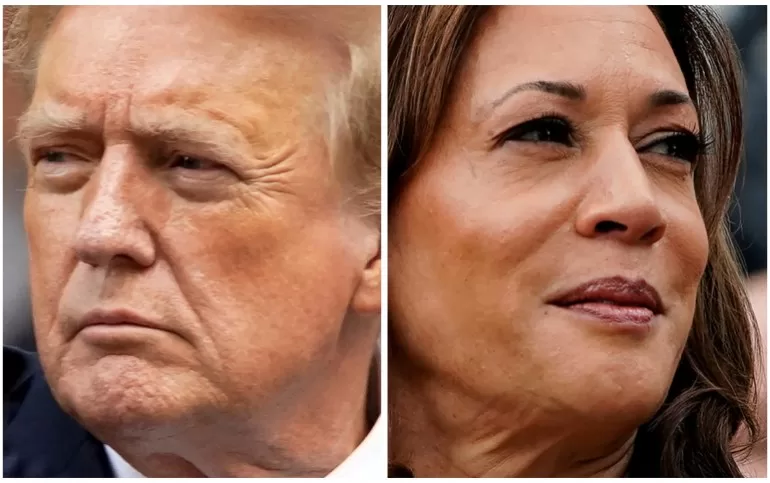Election Day in the United States is less than a week away, so here’s what you need to know about how the 2024 presidential vote works.
Who can vote?
In the US, citizens must meet some very basic eligibility criteria in order to vote. They must be:
- A US citizen
- A resident of the state where they registered to vote
- 18 years or older
Voter eligibility can vary from state to state, particularly when it comes to criminal convictions. For example, individuals who have a criminal record may face restrictions in certain states, including losing the right to vote permanently.
There are approximately 160 million registered voters, but not all of them will vote. In the 2020 election, the turnout was around 66 percent, the highest it has been for more than a century.
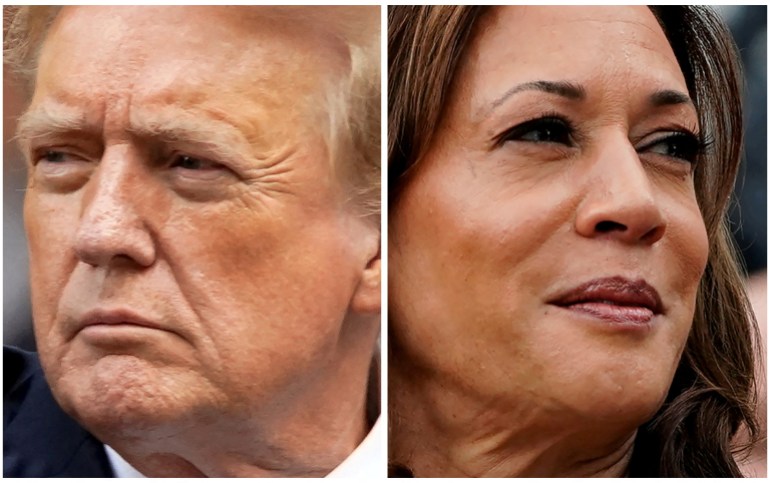
How does the US election work?
US politics is dominated by two parties, the broadly centre-left and liberal Democrats and the right-wing and conservative Republicans; potential candidates emerge from either party to vie for the presidential nomination. To select their nominee, the Democrats and Republicans hold primary elections or caucuses in each state, which culminates in the victor accepting the nomination at either the Republican or Democratic National Conventions. This cycle now pits Democratic Vice President Kamala Harris against former Republican President Donald Trump.
US President Joe Biden had initially sought re-election to a second term, but he dropped out in July after a disastrous debate performance raised questions about his ability to govern for another four years.
There are also third-party or independent candidates, such as the Green Party’s Jill Stein, the Libertarian Party’s Chase Oliver, and the anti-war academic, Cornel West.
In the elections phase, presidential candidates appoint their own running mates — in this case, Democrat and Minnesota Governor Tim Walz and Republican Ohio Senator JD Vance — who will become vice president if the nominee’s candidacy is successful. Voters then cast their ballots for a president and vice president, and the result of this vote is then channeled through the Electoral College.
Since 1845, US elections have been held on the first Tuesday of November. However, voters also have the option of voting early in most states, and more than 52 million votes have already been cast.
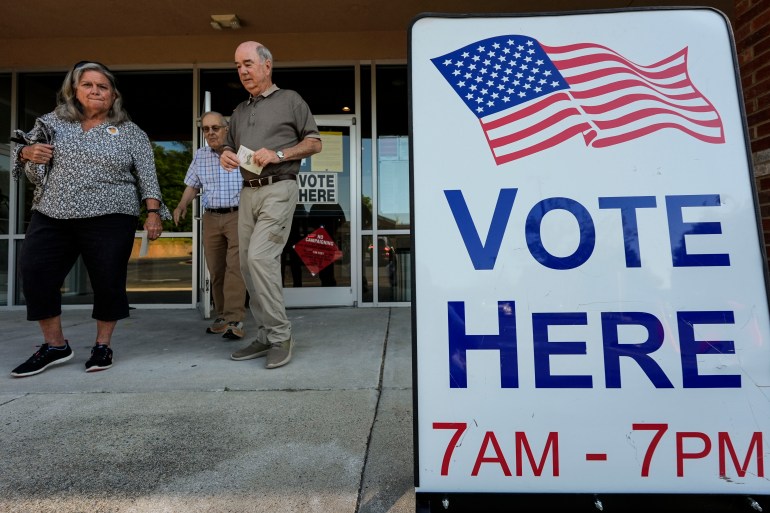
How does the Electoral College work?
To understand how US elections work, and how voters choose their next leader, one must understand the US Electoral College.
Unlike members of the US Congress, who are directly chosen by voters, the US president is not elected by a direct national vote. Instead, when Americans cast their ballots, they are selecting a slate of “electors” from their state who pledge to vote for specific presidential and vice-presidential candidates, based on the votes cast in the state for each candidate. Once votes are counted and certified, these electors formally cast their votes. The infographic below outlines this process.
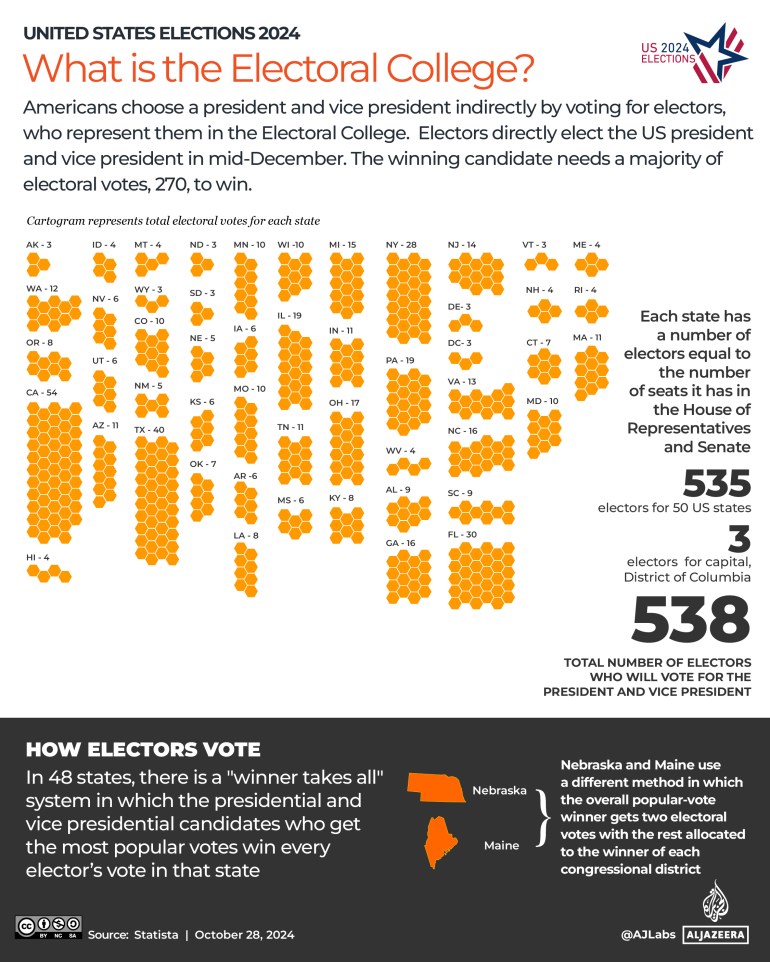
Want to know more about the Electoral College? Watch the short explainer video below, or read this brief overview.
How many electoral votes does it take to win the election?
It takes 270 electoral votes to win a US presidential election, which is a majority of the 538 total electoral votes available.
This system can create surprising outcomes: a candidate can win the popular vote across the country yet lose the Electoral College, which has happened five times in US history. The most recent instance was in 2016, when Trump won the presidency over Hillary Clinton despite trailing by nearly three million votes nationwide.
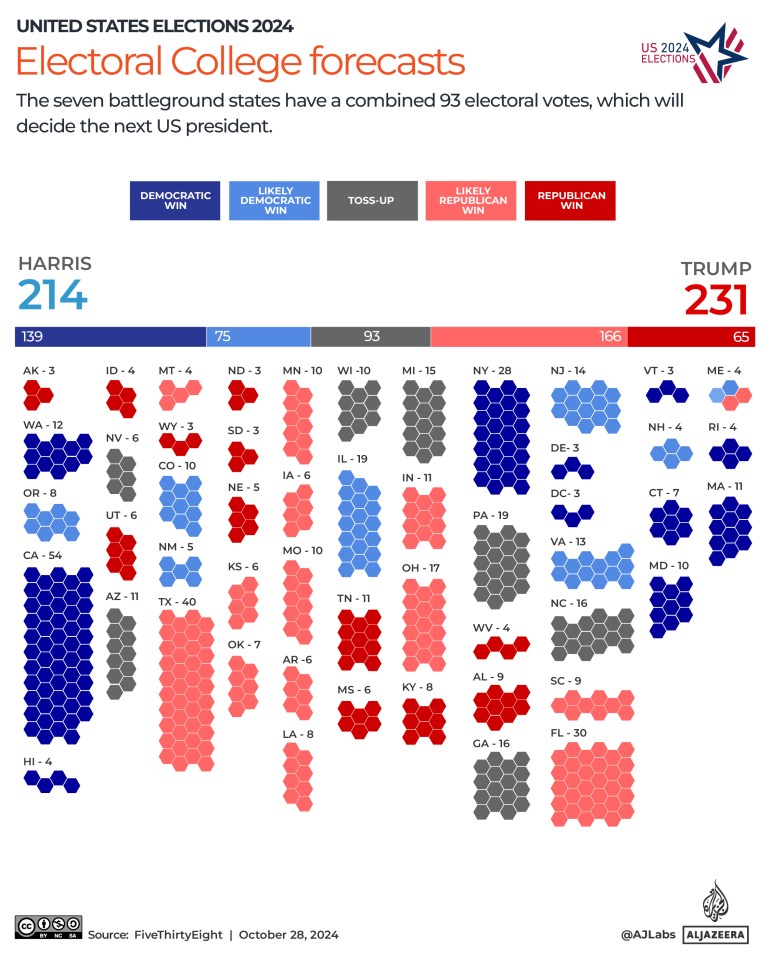
What are the polls saying?
As Election Day approaches, Harris and Trump are neck and neck, fiercely competing for control of key swing states. We’re closely watching undecided voters in these states, who could in fact swing the race in either direction.
Harris holds a narrow 1.5-point lead nationally, according to FiveThirtyEight’s poll tracker, though Trump has nearly closed the gap. A Reuters/Ipsos poll places Harris ahead by just one point, within the margin of error.
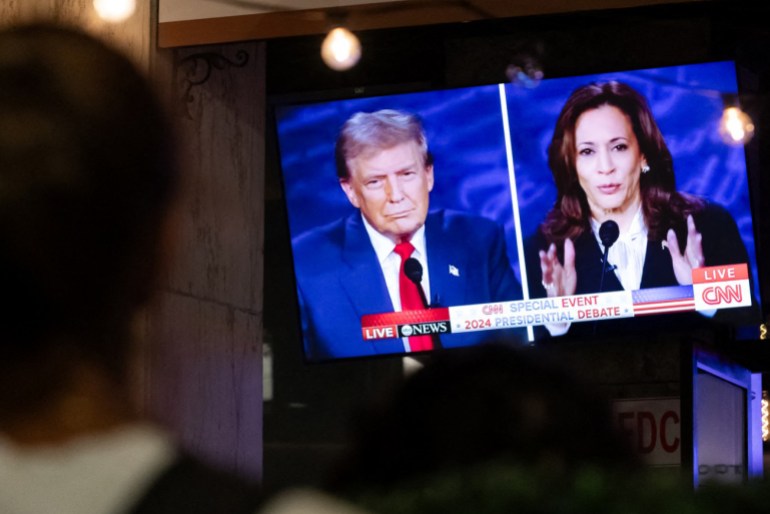
Trump leads on economic and immigration issues, while Harris has a diminishing advantage on political extremism.
Swing states like Pennsylvania, Georgia, and Arizona show razor-thin margins. Although national polls favour Harris, the Electoral College outcome remains uncertain, echoing past election unpredictability.
When will we know who won? When will the results be announced?
That’s up in the air. It’s highly unlikely that a winner will be determined on election night. However, it’s not out of the question. Historically, a winner would be announced on the night of or morning after the election.
As polls close across the country on Election Day, the media will report real-time results, with results coming in from the Eastern Time Zone first. Final tallies may not be available immediately, particularly with the increased volume of mail-in and absentee ballots. In some cases, states have laws allowing ballots postmarked by Election Day to be counted even if they arrive later. This process can lead to delays in certain states, particularly those with narrow margins.
These delays could be seized upon by Trump to spread the narrative that the election has been stolen, as he falsely tried to do in 2020. In that election, many of the votes that arrived or were counted late were for the Democrats, typically because the party has more support in cities where vote counting takes longer, and because Trump discouraged his supporters from using mail-in ballots.
If no candidate wins 270 electoral votes, a contingent election occurs. The House elects the president, with each state casting one vote, and the Senate elects the vice president. A House candidate needs a majority (26 states) to win. This rare process last happened in 1824 when John Quincy Adams was elected by the House of Representatives after Andrew Jackson won the popular and electoral votes but fell short of a majority.
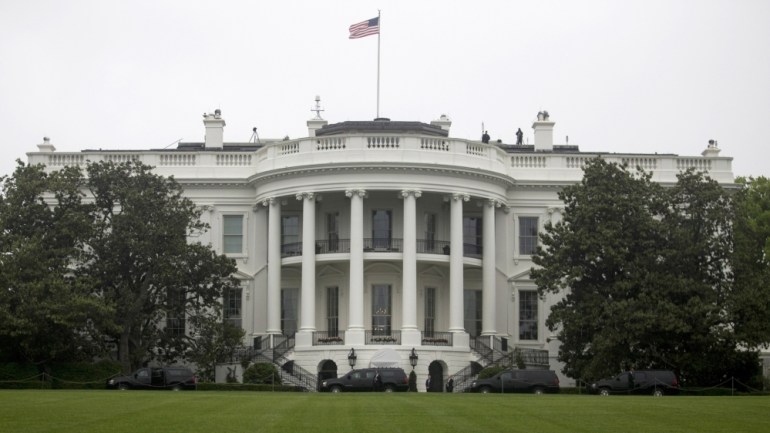
What are the key dates to watch?
- Election Day: November 5 – Most Americans vote in person or by mail.
- Certification deadlines: November 6 – December 11 – States certify election results within this timeframe.
- Electoral College vote: December 17 – Electors meet to cast their official votes.
- Congress counts electoral votes: January 6, 2025 – Congress convenes to count and confirm electoral votes.
- Inauguration Day: January 20, 2025 – The president-elect is sworn in, marking the transition of power.
